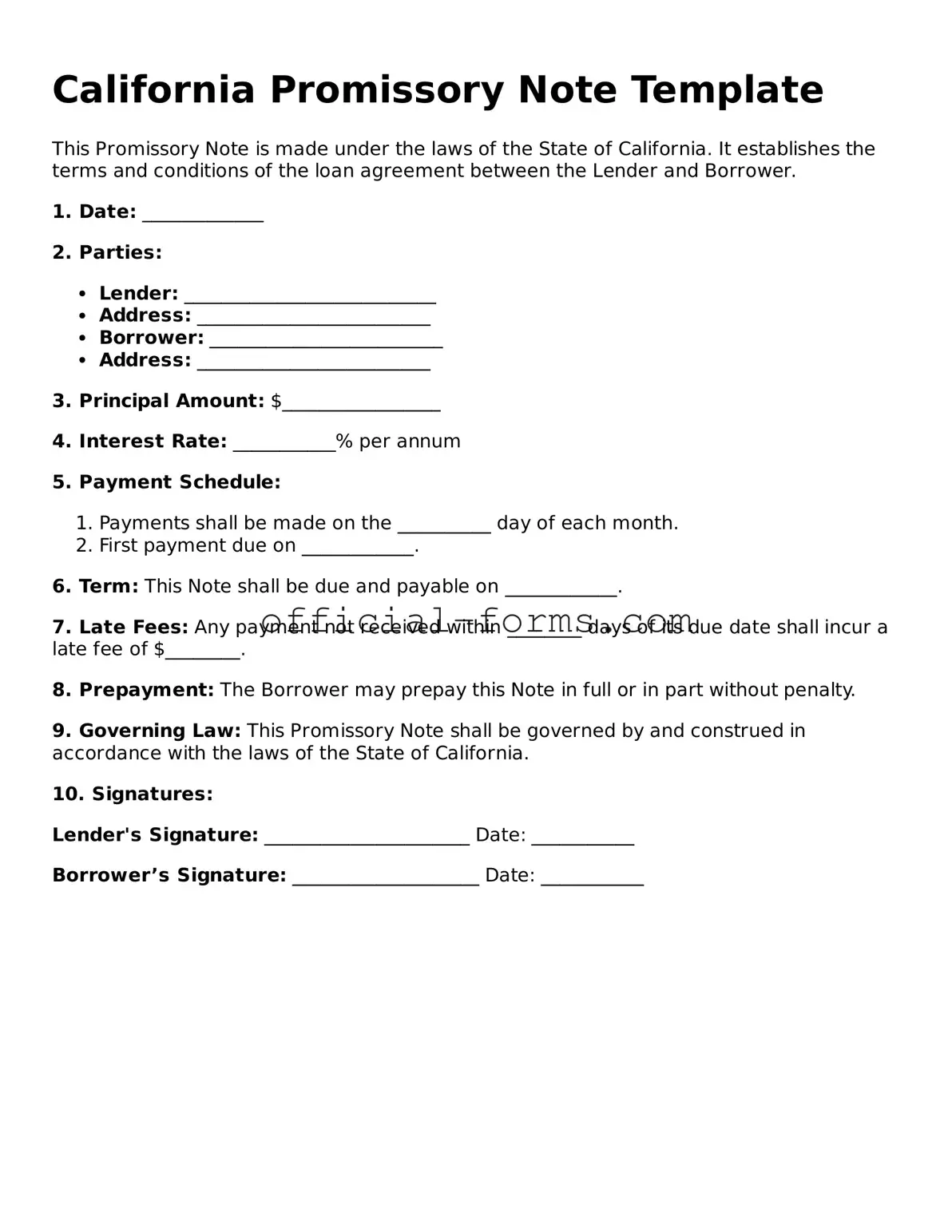The California Promissory Note form serves as a vital financial instrument in the realm of personal and business transactions, facilitating the lending and borrowing of money between parties. This legally binding document outlines the terms of the loan, including the principal amount, interest rate, repayment schedule, and any applicable fees. It is essential for borrowers to understand their obligations, as well as for lenders to protect their interests. The form typically requires signatures from both parties, indicating mutual agreement to the terms laid out within. Additionally, it may include provisions for default, allowing the lender to take specific actions should the borrower fail to meet their repayment commitments. By utilizing this form, individuals and businesses can ensure clarity and accountability in their financial dealings, thereby fostering trust and reducing the potential for disputes.
